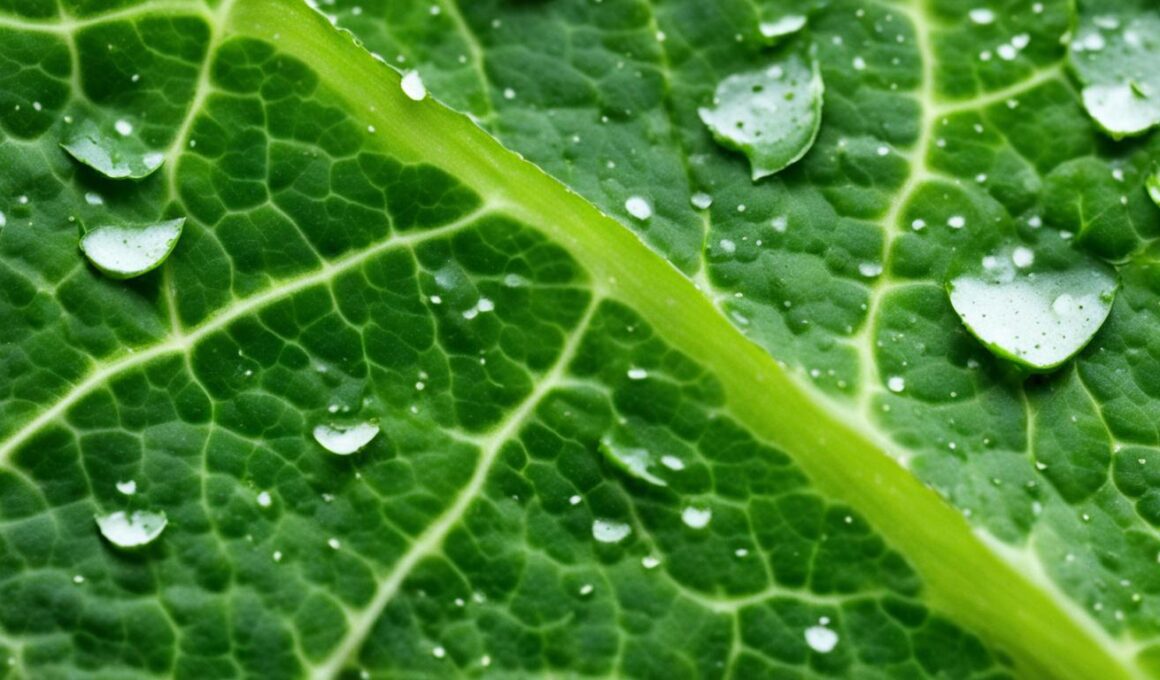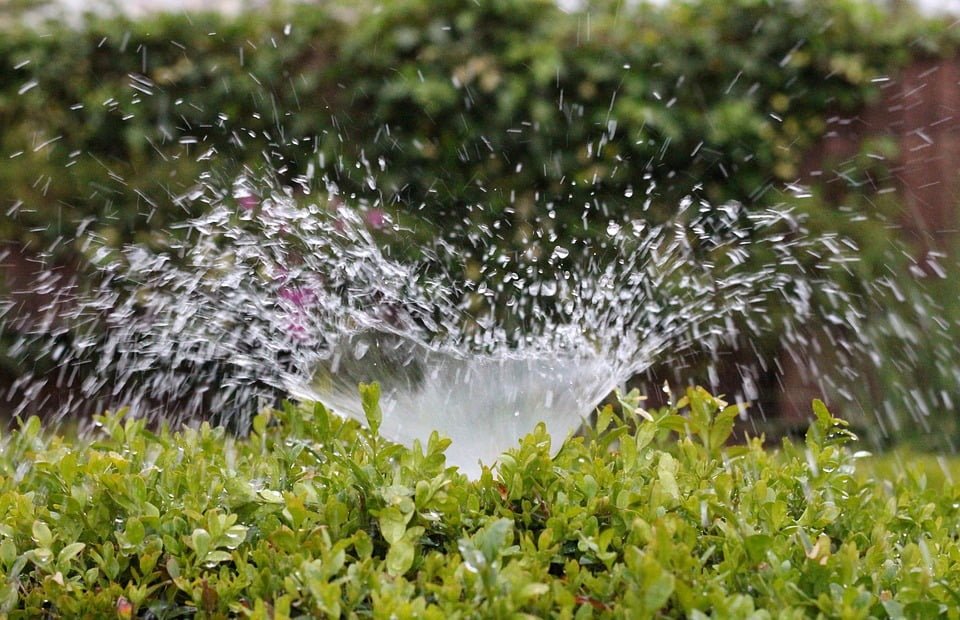Are you noticing white spots on your cucumber leaves? Don’t worry, you’re not alone. Many cucumber growers encounter this issue, and it’s important to understand the causes and find effective treatments to prevent further damage to your plants.
The main culprit behind the development of white spots on cucumber leaves is a fungal disease called powdery mildew. The fungus, known as Podosphaera xanthii, creates powdery white spots on both the upper and lower leaf surfaces. These spots can quickly expand into large blotches, weakening the plant and affecting its overall health.
Powdery mildew thrives in warm, dry conditions and spreads easily, producing new spores that can infect other leaves. However, other factors such as lack of sunlight, poor air circulation, improper watering, and overfertilization can also contribute to the development of white spots on your cucumber leaves.
To effectively manage powdery mildew and eliminate white spots on cucumber leaves, it’s important to consider several treatment options. Proper spacing and staking of plants, weed control, and the use of fungicides may be necessary, especially for susceptible cucumber varieties. Additionally, addressing other contributing factors, such as improving air circulation and adjusting watering and fertilization practices, can help prevent the recurrence of white spots and promote healthier cucumber plants.
In the next sections of this article, we will delve deeper into identifying powdery mildew, discussing preventative measures, and providing detailed guidance on managing and treating infected cucumber plants. By following these steps, you can effectively combat powdery mildew and keep your cucumber plants thriving.
Identifying Powdery Mildew and Preventative Measures
Powdery mildew on cucumber leaves can be identified by the appearance of pale yellow leaf spots that quickly transform into large white blotches. This fungal disease primarily affects cucurbits, including cucumbers, muskmelons, squash, and pumpkins. It thrives in humid conditions with temperatures ranging from 68-81°F.
To prevent powdery mildew, it is important to provide good air movement around plants through proper spacing, staking, and weed control. By ensuring adequate spacing between plants, you allow for better air circulation, decreasing the chances of powdery mildew development. Staking your plants also helps promote air movement and prevents the leaves from touching the ground, which can facilitate the spread of the disease. Regularly removing weeds from your garden eliminates potential hiding places and reduces moisture build-up.
Growing disease-resistant cucumber varieties is another proactive measure you can take to prevent powdery mildew. These varieties have been bred to possess natural resistance or tolerance to the disease, reducing their susceptibility. Additionally, avoiding excessive nitrogen fertilizer applications can help prevent powdery mildew. Over-fertilization can lead to lush, dense foliage, creating a favorable environment for the fungus to thrive.
If powdery mildew has previously caused yield loss in your garden, fungicide applications may be necessary. However, it is important to note that chemical control should be used as a last resort and only when other preventive measures have failed. Always follow the instructions provided on the specific fungicide product to ensure safe and effective use.
Managing Powdery Mildew and Treating Infected Plants
If you want to effectively manage powdery mildew in your home garden, there are several important steps you can take. By implementing these measures, you can prevent the disease from spreading and treat infected cucumber plants.
1. Plant Disease-Resistant Varieties
Choosing disease-resistant cucumber varieties is crucial for managing powdery mildew. These varieties have built-in resistance to the fungus, making them less susceptible to infection. Look for varieties that are specifically labeled as resistant to powdery mildew when selecting your cucumber seeds or seedlings.
2. Provide Good Air Circulation
Powdery mildew thrives in humid environments with poor air circulation. To prevent the disease from taking hold, make sure your cucumber plants are properly spaced and staked. This allows air to circulate freely around the leaves, reducing the chances of infection. Additionally, practicing regular weed control will help eliminate potential breeding grounds for the fungus.
3. Optimize Fertilization
Applying fertilizer based on soil test results can help create an optimal nutritional balance for your cucumber plants. Avoid over-application of nitrogen, as excessive nitrogen levels can promote the growth of succulent foliage, which is more prone to powdery mildew. Following recommended fertilization guidelines will help reduce the risk of infection.
4. Prune Infected Leaves
If you notice any signs of powdery mildew on your cucumber plants, it’s important to address the issue promptly. Prune the affected leaves and dispose of them properly to prevent further spread of the disease. This will help contain the infection and protect healthy parts of the plant.
5. Consider Organic Treatments
For treating powdery mildew on infected cucumber plants, you can explore organic options that are safe for beneficial insects and pollinators. Neem oil and bio-fungicides are effective against powdery mildew and can be used to control the disease. Use these treatments as directed, following the instructions on the product labels.
6. Regular Monitoring and Fungicide Treatments
Regular monitoring is essential for managing powdery mildew in commercial production. Implement a monitoring system to detect the presence of powdery mildew early on. If the disease is detected, timely fungicide treatments should be applied according to the recommended schedule. This will help effectively control the spread of the disease and protect your cucumber plants.
What Are the Causes and Treatments for White Spots on Cucumber Leaves?
One common cucumber leaves turning white causes is powdery mildew, a fungal disease that thrives in warm, humid conditions. To treat this issue, try spraying affected plants with a mixture of water and baking soda, or with a fungicide labeled for powdery mildew. Pruning infected leaves can also help prevent the spread.
Conclusion
White spots on cucumber leaves are a common issue caused by powdery mildew, a fungal disease that can weaken the plants and impact fruit production. By implementing proper preventative measures, such as ensuring good air circulation, planting disease-resistant cucumber varieties, and avoiding overfertilization, you can minimize the risk of powdery mildew.
If you do identify powdery mildew on your cucumber plants, it is crucial to take immediate action. Prompt treatment with fungicides and the removal of infected leaves can effectively control the spread of the disease and protect the health of your plants. Additionally, regular monitoring for the presence of powdery mildew is essential, especially in commercial production, where timely fungicide treatments are important.
By following these guidelines, both gardeners and commercial growers can effectively manage powdery mildew and maintain healthy and productive cucumber plants. Remember, prevention is key, but if powdery mildew does occur, swift and appropriate action can make all the difference in preserving the vitality of your cucumber crop.









